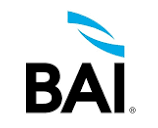The “Fraud Front Line”: Three Focuses for FIs in 2025
- Fraud is set to become even more challenging
- Advanced tech allows fraudsters to "flood the zone"
- Fraud prevention must be viewed as an investment, not just a cost center
The fraud landscape is set to become even more challenging for banks and credit unions in 2025, according to Jim Houlihan, partner and principal consultant at Paladin Fraud. In a recent BAI Banking Strategies podcast, host Rachel Koning Beals discusses with Mr. Houlihan the current state of fraud and also outlines three key trends that will define the fraud front line in the coming years.

Trend 1: Bad actors will be coming at all of FIs products all the time -- taking a broad, high-volume approach
How are fraudsters accomplishing this? Mr. Houlihan explains:
The first fraud trend for 2025 is that banks and credit unions should expect bad actors to be coming at all of their products all the time. This "flood the zone" is being driven largely by technology that enables fraudsters to efficiently attack institutions at scale across a wide front.
With the assistance of technology, fraudsters have to ability to target multiple channels at the same time. Fraudsters will always come up with new schemes and tactics, and once they are able to exploit a weakness in a channel, they will continue to do so until they are stopped...then move onto the next.

Not only are fraudsters exploiting vulnerabilities across different product lines and payment methods, they are looking to overwhelm defenses. Mr. Houlihan points to check fraud as a prime example; the industry has seen massive increase since the pandemic. He notes that fraudsters are taking the high-volume approach with check fraud, as not each fraudulent check needs to pass through in order to be successful.
I think one of the things I always like to say is that fraudsters will need to get it right one out of 100 or one out of 1,000 times, depending on the size of what they’re trying to get at. And that really, really makes them be successful. They are a business, they run a budget, all the rest of that.
Trend 2: Fraudsters are growing more "brazen"
This builds off the first trend, as fraudsters are adapting and now attacking government agencies and regulators as well. Fraudsters are also strategically targeting regulators, flooding them with false claims and complaints to distract from their other illicit activities. The "overwhelming the system" tactic puts additional pressure on banks and credit unions.
This is exacerbated by the sensitivity from regulators on funds availability. According to Mr. Houlihan:

And then the second thing we’re really seeing with them is there’s a lot of sensitivity from a regulatory perspective around customers being able to have access to their funds, transact immediately, all of those components. So you’ll see them filing complaints with like the CFPB, et cetera, which then causes them to come back down on top of the institution, which causes more churn internally at the institution around “We can’t keep saying no to our customers” when in fact they’re really fraudsters you’re saying no to. That’s really escalated over the last couple of years, especially from a COVID perspective, how much it’s carried through the environment of we’re really worried about telling a good customer no.
Trend 3: Regulatory shifts with the new administration does NOT mean taking a step back
The new administration has demonstrated a different approach from a regulatory standpoint, as we've seen big changes like the dissolving of the CFPB. However, Mr. Houlihan warns that while many see this administration as possibly taking a more lenient approach, this should not be a sign for FIs to take it easy on the fraud front. He cautions that banks must resist the temptation to scale back their fraud prevention efforts. Doing so could leave them vulnerable to increased losses, as fraudsters seek to exploit any perceived weaknesses.
As Ms. Beals aptly summarizes:
So if I’m hearing you correctly, you’re saying it still is prudent to devote operational spending toward the fraud fight, even if Washington isn’t mandating it.
An Investment, Not Just a Cost Center

Ultimately, Mr. Houlihan stresses that fraud prevention must be viewed as an investment, not just a cost center. By taking a strategic, ROI-focused approach, banks and credit unions can strike the right balance between protecting their customers and maintaining a positive user experience.
In order to combat these evolving fraud threats, Mr. Houlihan emphasizes the need for a more proactive, data-driven approach.
This includes:
- Closer collaboration with vendors to leverage the latest fraud-fighting technologies and techniques
- Improved information sharing between institutions to identify emerging threats
- Rigorous analysis of fraud data to pinpoint vulnerabilities and optimize defenses
We've seen several initiatives by FIs, fintechs, and government agencies collaborating to fight back against fraudsters, particularly when it comes to check fraud. This includes the ABA and USPS initiative, the recent Check Fraud Symposium held by the ABA, as well as various consortiums and information exchanges between banks.
Fintechs have also stepped up their game, with investments in technologies like image forensic AI, adding new features to combat the new trends. Fraud technologies need to be leveraged and deployed as part of a multi-layered technology approach, addressing all points of check fraud.